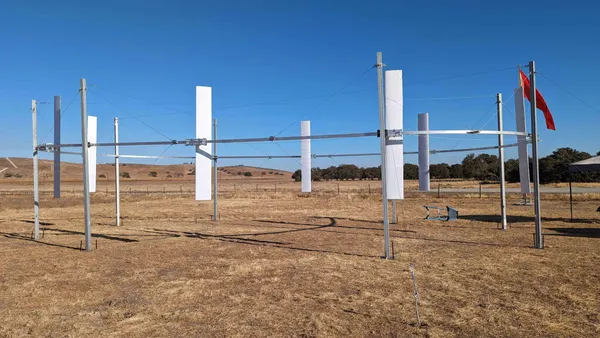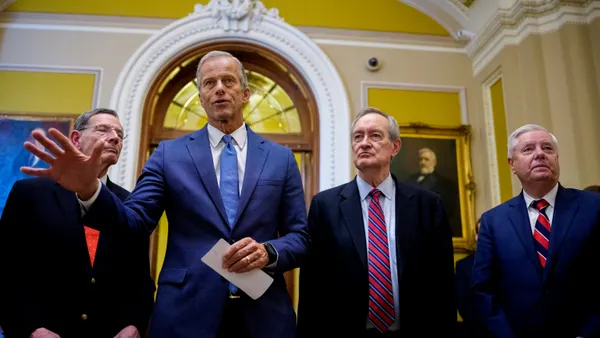Dive Brief:
-
Despite the machinations of some state politicians and the negative opinions of President Donald Trump, wind power continued to grow robustly in 2018, adding nearly 7.6 gigawatts of new capacity representing an investment of $11 billion, reports the Department of Energy's annual Wind Technologies Market Report, released this week.
-
Wind represented the third largest source of new generation in the U.S., behind solar and natural gas in 2018, according to the DOE. Texas installed the most wind power capacity during the year, nearly 2.3 gigawatts, followed by Iowa at 1.1 gigawatts. Total Texas wind generation capacity is now 24.9 gigawatts, the highest of any state, while Iowa is second in capacity at 8.4 gigawatts.
-
The federal wind production tax credit (PTC) and the 12% investment tax credit (ITC) for large wind projects are scheduled to expire in 2020, leaving a somewhat uncertain future for deployment. Congress is considering several bills that would expand tax credits, including a PTC extension specifically for offshore wind development, which is poised to grow rapidly.
Dive Insight:
President Trump again expressed anti-wind energy views on Tuesday, when speaking at a Shell petrochemical plant in Pennsylvania.
Wind "kills all the birds," he said, adding that when wind speeds slow down or stop reducing wind generation, power to customers is interrupted. In April this year, Trump has asserted that wind turbines cause cancer.
But growth in the sector is strong — and will be for the next couple of years — and average PPA prices have fallen below $0.02/kWh, though the average "is dominated by projects that hail from the lowest-priced Interior region of the country," according to the report from Lawrence Berkeley National Laboratory.
Technological improvements, including larger rotor diameters, higher hub heights and higher capacity factors, along with increases in state renewable energy standards and existing federal tax policies came together in 2018 to create the strong growth driven by developers who were able to raise $6 billion to $7 billion of private equity.
Looking through the end of 2022, there's an enormous backlog of projects already on the books that qualify for safe harbor provisions, allowing them to use tax incentives even after those incentives expire at the end of this year. These projects are expected to continue propelling the growth of the industry.
Industry experts see such growth continuing to expand "at a rapid clip" over the next two or three years because of those Safe Harbor provisions, growing by 9 to 12 gigawatts in 2019 and 11 to 15 gigawatts in 2020, the report said. Wind energy growth is expected to decline after 2021, due in part to the end of tax credits but also because natural gas prices are expected to remain low, solar tax credits will continue as solar technologies improve, and more utility-scale solar arrays are built.
Wind power growth is actually outpacing state renewable energy portfolio standards (RPS), which the District of Columbia and 29 states have enacted. About 47% of wind capacity built between 2000 and 2018 was built to meet an RPS, the analysis finds. But of the wind projects built in 2018, that proportion built to satisfy a state RPS fell to just 19%. In other words, more than 80% of the wind projects built in 2018 were built to satisfy market demands rather than to meet a state requirement.













